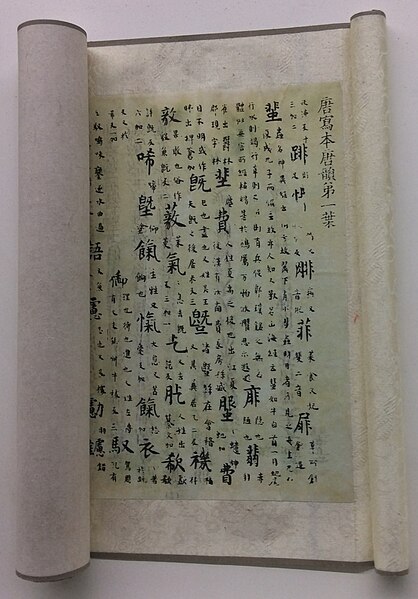The Qieyun is a Chinese rime dictionary that was published in 601 during the Sui dynasty. The book was a guide to proper reading of classical texts, using the fanqie method to indicate the pronunciation of Chinese characters.
The Qieyun and later redactions, notably the Guangyun, are important documentary sources used in the reconstruction of historical Chinese phonology.
Qieyun excerpt displayed at the Chinese Dictionary Museum in Jincheng, Shanxi
Tangyun excerpt in the Chinese Dictionary Museum
A rime dictionary, rhyme dictionary, or rime book is an ancient type of Chinese dictionary that collates characters by tone and rhyme, instead of by radical. The most important rime dictionary tradition began with the Qieyun (601), which codified correct pronunciations for reading the classics and writing poetry by combining the reading traditions of north and south China. This work became very popular during the Tang dynasty, and went through a series of revisions and expansions, of which the most famous is the Guangyun (1007–1008).
Copy of the Tangyun, an 8th-century edition of the Qieyun
Copy of fragments of the Wang Renxu edition of the Qieyun
Sea of Characters, level tone folio 53
Image: Guangyun Dong Rhyme 1




